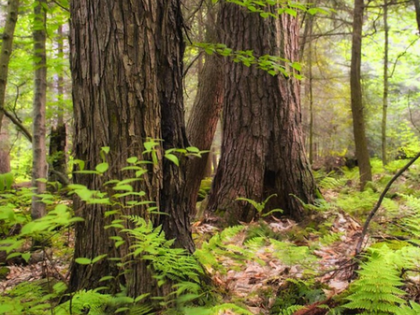TN plans to introduce AI cameras to reduce human-wildlife conflict in Valparai forest
By IANS | Updated: August 18, 2025 08:55 IST2025-08-18T08:46:32+5:302025-08-18T08:55:07+5:30
Chennai, Aug 18 The Forest Department is considering the installation of Artificial Intelligence (AI)-enabled cameras in Tamil Nadu's ...

TN plans to introduce AI cameras to reduce human-wildlife conflict in Valparai forest
Chennai, Aug 18 The Forest Department is considering the installation of Artificial Intelligence (AI)-enabled cameras in Tamil Nadu's Valparai to reduce incidents of human-wildlife conflict in the region.
The move comes as part of a broader effort to use technology to track animal movements and issue timely alerts to local residents.
“We are exploring the use of AI systems to monitor leopards, sloth bears, and wild elephants. Whenever there is an intrusion, the system will generate a species-specific alert to warn the public and prevent potential conflict. A detailed study is being carried out to identify locations where cameras need to be fixed, the manpower required, and the infrastructure needed,” said M. Suresh Krishnan, Forest Range Officer (FRO), Valparai Range.
The findings of this study will form the basis of a proposal to the state government, along with an estimate of the financial requirements for implementation.
The department has already had success with similar measures elsewhere. An AI-based monitoring system set up along railway tracks in Madukkarai near Coimbatore has helped reduce elephant deaths caused by trains.
Encouraged by those results, officials now hope to extend the technology to forest-human interfaces in Valparai, where conflict has been a recurring issue.
As part of earlier initiatives, “virtual fencing” has been introduced to protect human settlements in vulnerable areas.
Under the Tamil Nadu Innovation Initiatives (TANII) scheme, 1,300 solar-powered smart fencing devices with thermal sensors were installed -- 700 in Valparai Range and 600 in the Manomboly Range.
These ten-foot-high smart fences can detect animal movement up to 100 feet away. When triggered, they activate sirens and flashing lights designed to drive animals back and simultaneously alert people nearby.
“Residents remain vigilant when the alarms go off, especially during night hours, which has greatly reduced accidental encounters,” a forest department staff member noted.
However, recent attacks on children have occurred outside the zones covered by these fences, underlining the limitations of the current system.
It may be recalled that two children of migrant tea workers were recently mauled to death by a leopard and a sloth bear in this area.
Officials believe AI-enabled cameras could fill this gap by providing a wider surveillance network and real-time alerts, thereby strengthening existing safety measures. The proposed AI camera project is expected to mark a major step toward ensuring safer coexistence between people and wildlife in the ecologically fragile Valparai region.
Disclaimer: This post has been auto-published from an agency feed without any modifications to the text and has not been reviewed by an editor
Open in app